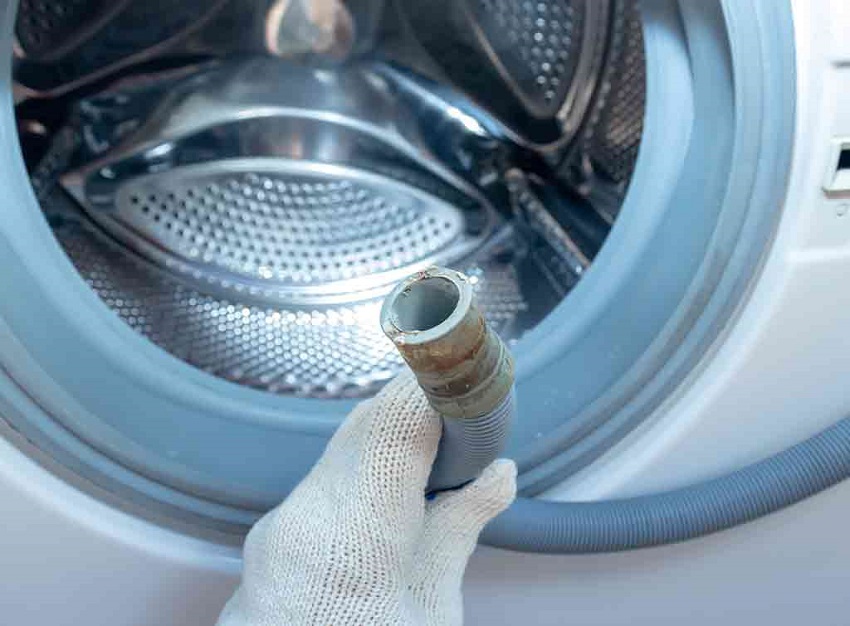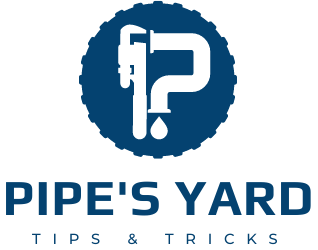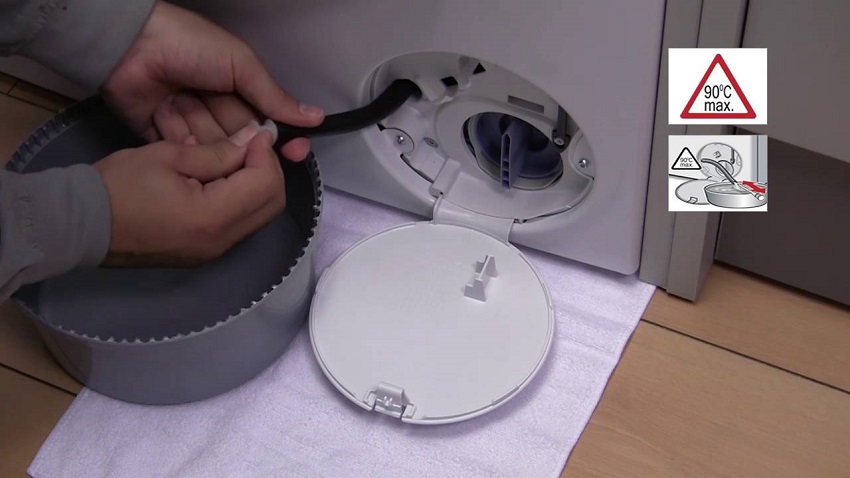A clogged washing machine waste pipe can disrupt your daily routine, leaving you with dirty laundry. But there’s no need to panic or call a plumber just yet. You can apply some DIY methods to unblock the mess.
So, how to unblock a washing machine waste pipe? You can resolve the problem by-
- Plunging
- Using a snake drain
- Pouring a mixture of baking soda and vinegar into the pipe.
If the DIY approach doesn’t work, you may have to use a commercial drain cleaner or contact a professional plumber for assistance.
We’re here to help you tackle the issue on a budget with basic tools and easy-to-follow steps. We’ll include warning signs, their causes, and preventative measures.
Warning Signs of A Blocked Washing Machine Waste Pipe
Monitoring potential warning signs of a blocked washing machine waste pipe is important. These signs include-
- A musty smell or wet patches around the machine
- Water backed into the sink
- Slow draining
- A distinct gurgling sound from the pipes, etc.
Also, your machine will take longer than usual to complete a cycle. Paying attention to these tell-tale signs will help catch any blockage early on and lessen the need for expensive repairs.
Common Causes of Blocked Washing Machine Waste Pipe
Too much detergent can build up over time and cause a blockage in your washing machine waste pipe. This common cause of blocked washing machine waste pipes is often overlooked, but if left unchecked, it can eventually lead to a major plumbing issue.

Lint, hair, and other small objects can also become lodged in the pipe, blocking the water flow and preventing the washing machine from properly draining. In addition, hard water causes limescale buildup, blocking the waste pipe eventually.
How To Unblock A Washing Machine Waste Pipe? DIY Solutions
Understand the anatomy of your washing machine waste pipes to identify any blockage. The waste pipe is at the back of the washing machine. It’s a thick, flexible hose attached to the back of the machine.
Follow the following solution methods to unblock your washing machine waste pipe.
Use a Plunger
A plunger is a tool used to unclog drains, usually in toilets or sinks. It has a rubber suction cup or a soft rubber flap linked to a handle. When the suction cup is pressed against the drain’s opening and the handle is moved up and down, it creates a vacuum that forces the blockage through the pipe.
Here’s how you can clean a washing machine waste pipe with a plunger:
- Step 1: Turn off the washing machine and unplug it from the power source.
- Step 2: Place a bucket under the waste pipe to catch any water that might spill out.
- Step 3: Put on the rubber gloves to protect your hands and remove standing water from the washing machine drum.
- Step 4: Place the plunger over the opening of the waste pipe. Press firmly with the plunger and then pull up quickly to create suction.
- Step 5: Repeat this motion several times, keeping the plunger tightly sealed over the waste pipe opening. Check the waste pipe periodically to see if any debris has been dislodged.
- Step 6: Once the blockage has cleared, turn on the washing machine and cycle with hot water to rinse any remaining debris.
Use a Drain Snake
A drain snake, or plumbing snake, is a long, flexible cable made of metal to clear clogs in pipes. It is inserted into a drain or pipe and pushed through the blockage by manually turning a handle or using an electric motor.
The cable’s long length and flexibility enable it to reach deeper into pipes and remove blockages that a plunger cannot. Here’s how to clean a blocked washing machine waste pipe with a drain snake:
- Step 1: Unplug the machine from the power source.
- Step 2: Put on rubber gloves to protect your hands and place a bucket under the waste pipe to catch any water that might spill.
- Step 3: Insert the drain snake into the waste pipe, pushing it in as far as it will go. Rotate the drain snake while pushing it through the pipe to loosen any debris.
- Step 4: Keep feeding the drain snake through the pipe until you feel the blockage has cleared.
- Step 5: Pull the drain snake out of the pipe.
- Step 5: Turn on the washing machine and cycle with hot water to rinse any remaining debris. Check the waste pipe periodically to ensure that the water is flowing freely.
Baking Soda and Vinegar
This method is ideal for unblocking clogged drains without using harsh chemicals. It’s a relatively inexpensive and eco-friendly approach that won’t damage your washing machine or plumbing system. Follow the steps below to apply this technique.
- Step 1: Unplug the washing machine and wear gloves and eye protection.
- Step 2: Disconnect the drain hose from the drainage pipe. Be prepared to catch any water that may come out.
- Step 3: Pour half a cup of baking soda into the drain hose using a funnel. If your hose is particularly long, you may need more baking soda.
- Step 4: Follow the baking soda with a cup of white vinegar. A fizzing reaction is created by combining baking soda and vinegar, which works to dislodge any obstructions.
- Step 5: Plug the end of the drain hose with a cloth or rag to prevent the solution from seeping out. Leave the solution to sit in the hose for about 30 minutes. This will give the fizzing reaction enough time to work its magic.
- Step 6: Remove the cloth or rag from the end of the drain hose and reconnect it to the drainage pipe.
- Step 7: Cycle with hot water to ensure the blockage is cleared.
Enzymatic drain cleaners like Green Gobbler are a good alternative to baking soda and vinegar. They use helpful bacteria to digest obstructions. Although they are not as instantaneous as chemical drain cleaners, applying them and letting them sit overnight can lead to the successful removal of the blockage.
High-Pressure Cleaner
High-pressure cleaners are powerful enough to break up any stubborn blockages in the washing machine waste pipe. Simply attach a sewer jetting hose to the pressure cleaner and push it down the waste pipe.
The cleaner’s power will force water through the blockage, clearing it out in no time. Using the highest pressure setting is important to ensure this method works.
What To Do When DIY Methods Fail?
DIY approaches may not always be effective. In many cases, the blockage can be too deep-rooted, or the pipe may be too damaged for these methods to be effective.
If you find yourself in this situation, the best option is to call in a professional plumber. They have the expertise and tools to safely identify and remove the blockage, restoring your washing machine’s waste pipe to full functioning.
Prevention Tips Against Waste Pipe Blockage to Achieve Optimal Drainage
- Regularly clean the filter in your washing machine to prevent any lint or debris from accumulating. Check your machine’s manual for instructions on accessing and cleaning the filter.
- Ensure you use the correct amount of detergent and fabric softener for each load, as too much can cause clogs in a washing machine waste pipe. We recommend two tablespoons of detergent for big loads of 12 pounds or more or one tablespoon for regular load size.
- Beware of warning signs like an odd smell or strange sounds from the waste pipe. Pay close attention to these signals and inspect the waste pipe regularly for signs of wear and tear.
- Use water softeners to combat limescale buildup. You can invest in a whole house water softener, such as the salt-based SpringWell salt-based water softener. Alternatively, you can use water softener tablets like the Calgon 3-in-1 water softener.
Conclusion
How to unblock a washing machine waste pipe can be simple or tricky, depending on the clogging situation. You can take several measures to unblock it yourself, such as using a plunger, drain snake, baking soda/vinegar mixture, or a high-pressure cleaner.
Besides, you may need to consult a professional if the blockage is too severe to remove safely. Always take preventative measures to keep your washing machine waste pipe from clogging in the future. This includes cleaning the drain filter regularly.

